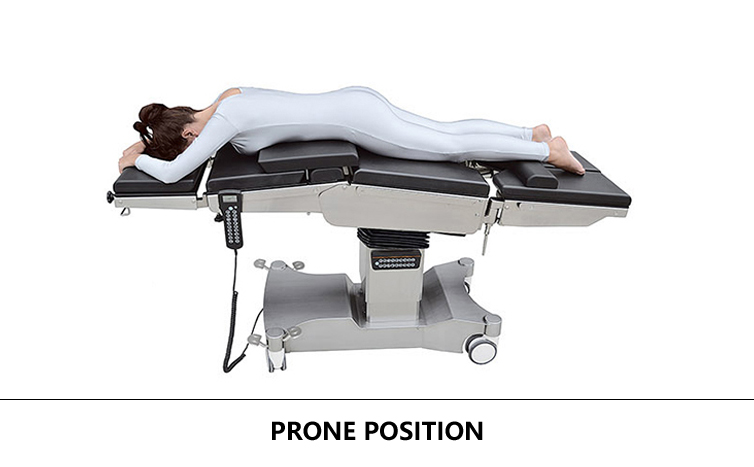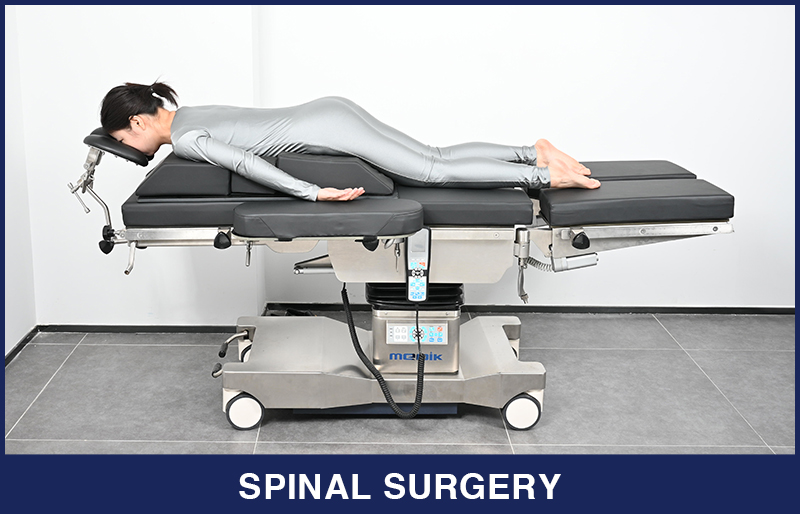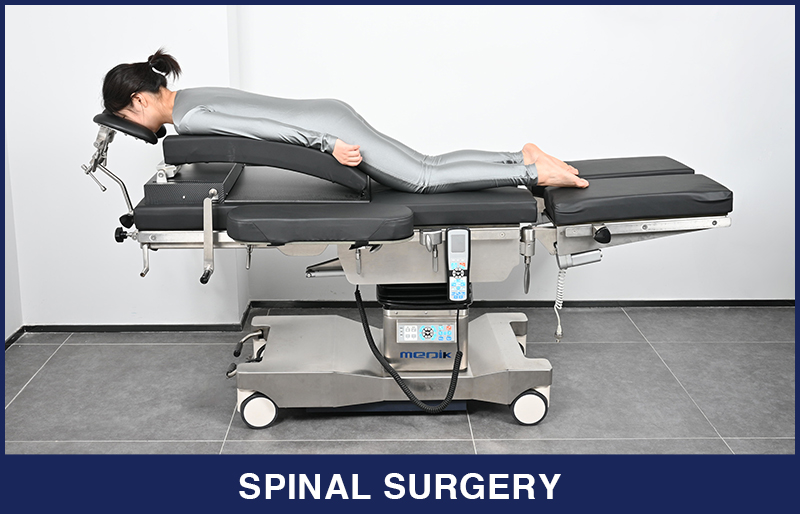

Patient positioning plays a crucial role in ensuring both the procedure's success and the patient's safety. One of the four basic patient positions during surgery is the prone position, where the patient is placed face down on the operating table. The optimal position may require a compromise between the best position for surgical access and the position the patient can tolerate. [1]
What is the Prone Position?
The Prone position is a common position used during surgical procedures that provides surgical access to the dorsal aspects of the patient’s body.1 In the prone position, the patient is positioned face-down with their head in a neutral position without excessive flexion, extension, or rotation. The head is typically placed in a neutral position, and the arms are either extended or tucked along the sides of the body. This position is generally used for surgeries where access to the back of the body or posterior regions is required.[2,3]

When to use the prone position?
The prone position is used during surgeries that require access to the back of your body. Some common examples include:
* Brain or brainstem surgeries
* Spinal surgeries
* Rectal or buttock surgeries
* Surgical procedures on the back of your arms or legs
The prone position is essential for exposing the back, spinal cord, and posterior brain, which are often critical to the success of these procedures.


How to decrease the risk of injury in this position?
Medical staff will assist the patient in slowly and carefully laying on his stomach if he needs to be in a prone position for surgery. The patient will generally receive anesthesia first and will be hooked up to any needed monitors, IVs, or other medical equipment before being placed in the prone position. There will be supportive cushioning to prevent injury to the face, breasts, and pelvic region.
● A minimum of four personnel is required to safely turn the patient into the prone position when transferring them from the stretcher to the OR table.
● All movements are carried out slowly and gently to allow the patient’s body time to adjust to the change from the original supine position.
● The anesthesia provider assists by supporting and managing the head and airway, one team member supports and rotates the torso while another team member on the other side of the bed positions the patient on the padded laminectomy frame or chest rolls.
● Pads and rolls are positioned lengthwise and lift the patient’s chest off the OR table to allow sufficient respiratory expansion.
● The fourth team member is responsible for supporting and moving the lower part of the patient’s body. During rotation, the patient’s arms should be placed at their side and their body should be maintained in an anatomically aligned manner. Caution should be taken to avoid unnecessary compression of the breasts and genitalia.
● The patient’s arms are brought down and forward in a normal range of motion and placed on arm boards near the head. The arms are flexed at the elbows with palms down and the elbows padded.[4]
Complications associated with prone position
Complications include hemodynamic changes resulting in hypoperfusion, a range of ophthalmologic conditions, central nervous system lesions, peripheral nerve compression injuries, compartment syndrome, and pressure ulcers. Other complications include airway swelling and peripheral arterial compression. Though most of these complications are rare, familiarity with the spectrum of potential complications and strategies for prevention can limit morbidity in prone spine surgery.
Prone position supporting devices
The followings are the devices or apparatus that can be used to help position the patient properly.
- Prone Positioner
- Flat-Bottom Chest Roll
Best Practices for Safe Use of the Prone Position
To ensure patient safety and minimize complications, the following best practices should be followed:
Patient Assessment: Before positioning a patient in the prone position, a thorough preoperative assessment is necessary. This includes checking for any pre-existing conditions that may make the prone position risky, such as respiratory or cardiovascular problems.
Team Collaboration: Positioning the patient correctly requires a coordinated effort between the surgical team. It’s essential that the patient is positioned gently and securely, with assistance from the anesthesia team to ensure patient stability.
Postoperative Care: After the surgery, the patient should be monitored closely to detect any complications, such as pressure sores or circulatory issues. Special attention should be given to the areas where pressure was applied during surgery.
Surgical Table Adjustments: The operating table should be adjusted to ensure the patient is positioned correctly throughout the surgery. This includes adjusting the headrest, armrests, and overall body positioning.
Conclusion
The prone position is an essential technique in surgery that allows access to the posterior regions of the body. While it provides surgeons with the necessary visibility and access, patient safety must always be the priority. By adhering to best practices, such as proper positioning, padding, and monitoring, the risks associated with the prone position can be minimized, leading to successful outcomes and enhanced patient safety.
Related Resources
Reference
1.https://www.uptodate.com/contents/patient-positioning-for-surgery-and-anesthesia-in-adults
2.Guideline for positioning the patient. (2017). AORN Journal, 105(4), P8-P10. doi:10.1016/s0001-2092(17)30237-5
3.Rothrock, J. C. (2011). Alexander's care of the patient in surgery (14th ed.). St. Louis, MO: Mosby.
4.Beckett AE. Are we doing enough to prevent patient injury caused by positioning for surgery? J Perioper Pract. 2010;20(1):26. PMID: 20225718.